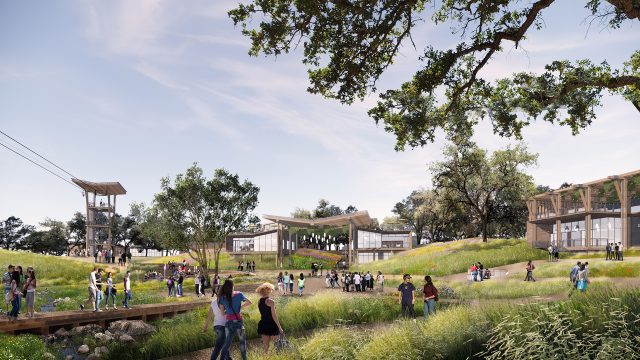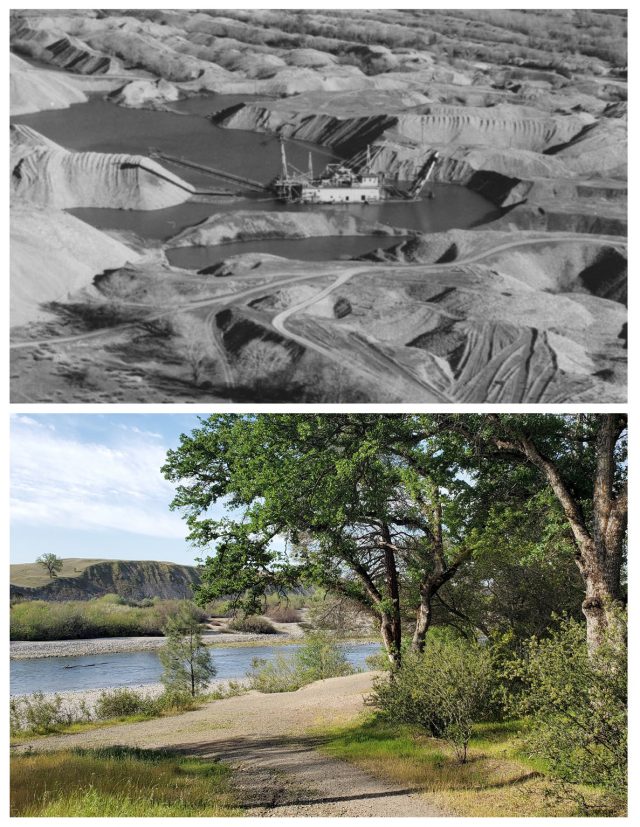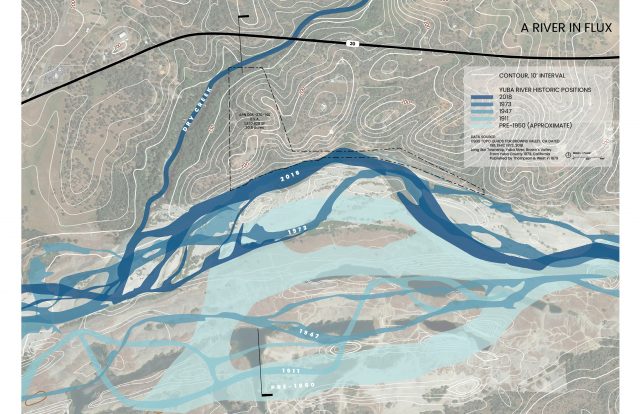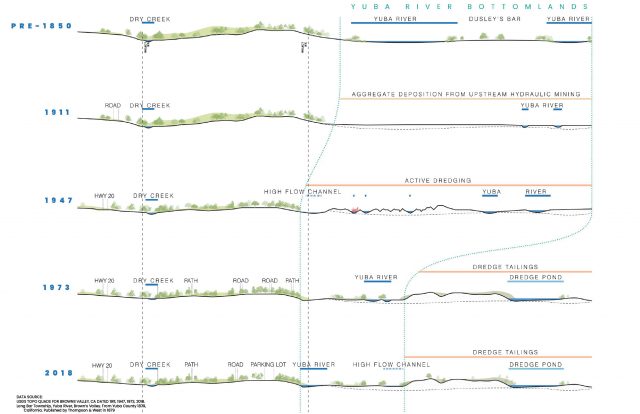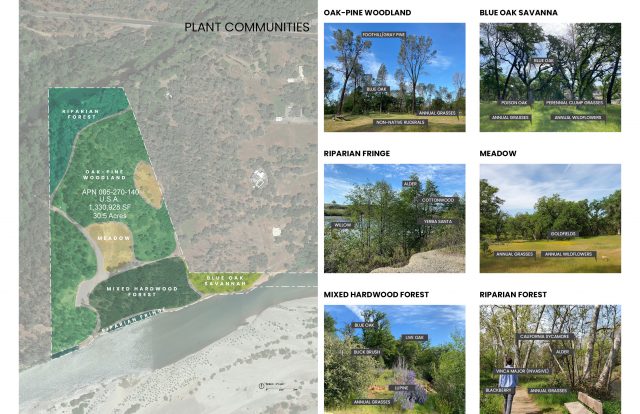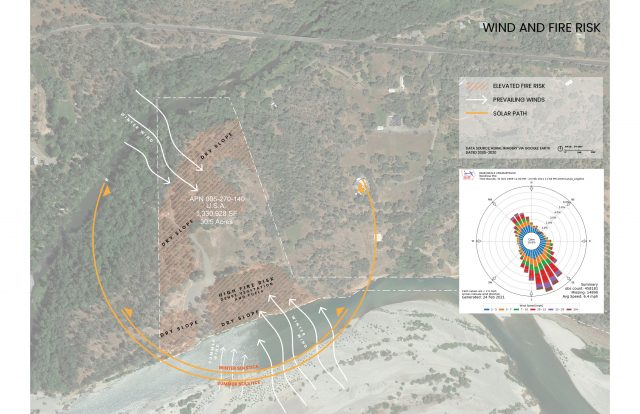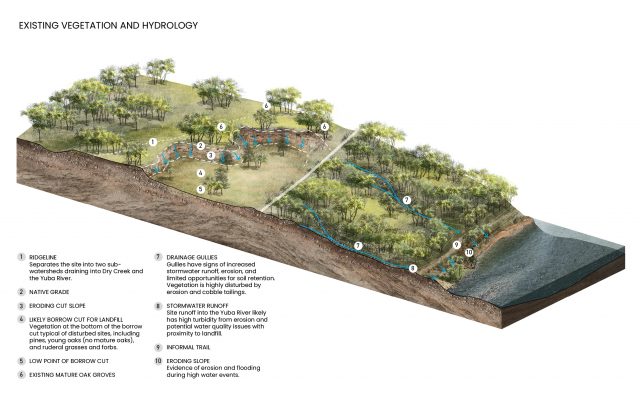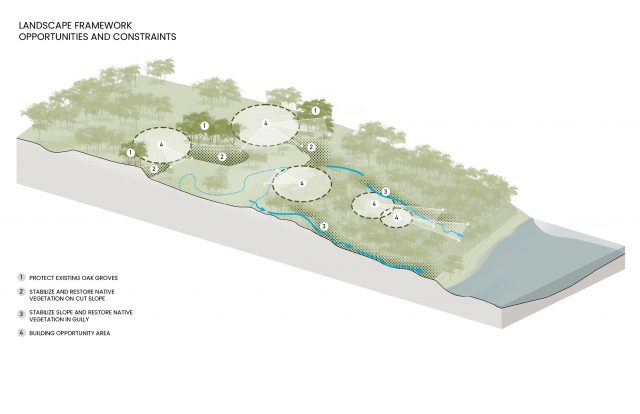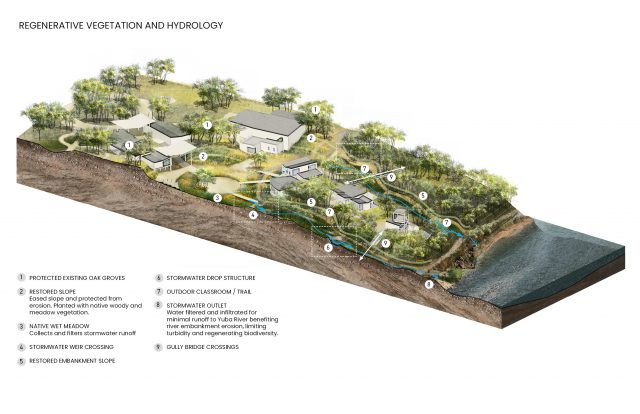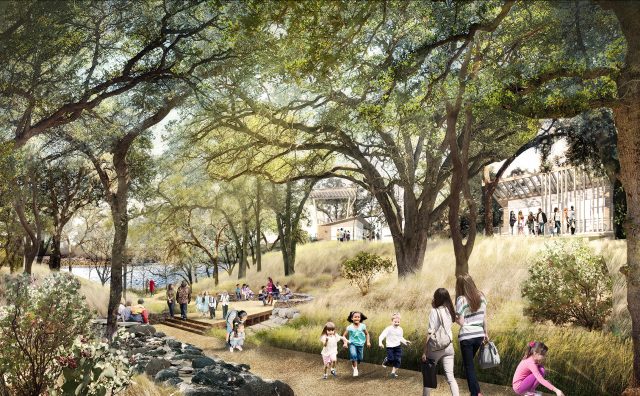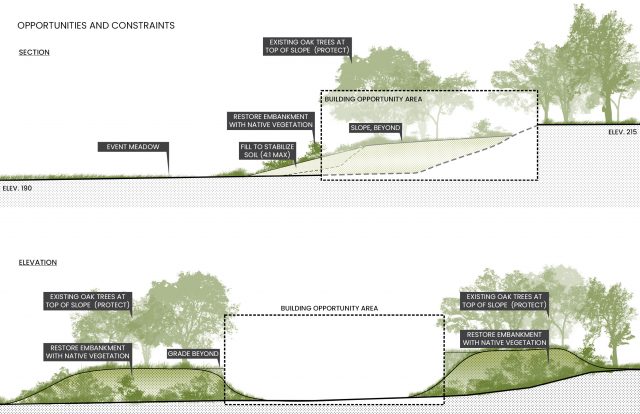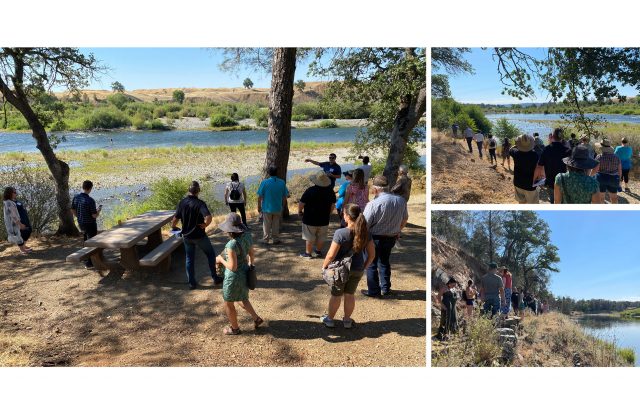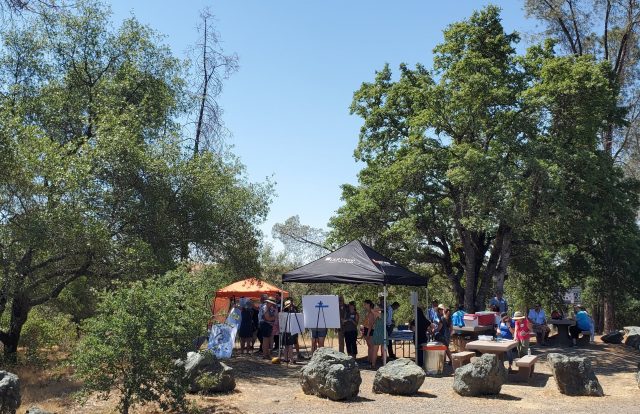about the project
Hammon Grove Park sits on the Yuba River east of Marysville, across from the infamous Yuba Goldfields and at a dynamic point in the watershed as the river transitions from the slopes of the foothills to the flats of the Sacramento Valley. Here, the landscape reflects the Yuba’s historic transition from a once-meandering flatlands river that wove between wide banks, to one of the most productive gold producing regions of California. Hydraulic mining in the foothills deposited vast amounts of gravel and sediment – up to 30m deep in some areas – along the once-fertile Yuba bottomlands. The deposits became the largest gold dredge field in California, with over one billion cubic yards of sediment and debris dredged between 1904 and 1968. This process dramatically altered the course of the Yuba River, shifting it northward by over half a mile and confining it to a narrow channel that carves into the southern edge of Hammon Grove Park.
The Master Plan for the Yuba Watershed Experience Center integrates the facility into the fabric of the landscape using a restorative approach. It sites buildings within a landscape framework that actively protects mature oak groves while restoring eroding embankments. Re-establishment of native vegetation, stormwater quality improvements, and increased biodiversity contribute to a didactic understand of the mining history, local ecologies and the Yuba watershed. Immersive education opportunities are prioritized as a complement to landscape moves that restore degraded hydrology and plant communities.
A diverse set of programs including new accessible trails, outdoor classrooms, an amphitheater, zipline, tree house are set within this restored and iconic blue oak savannah. Gathering and event areas support the Water Agency’s vision for a true community space, and reflect the community’s need for shared spaces to host cultural events. As visitors follow the flow of stormwater down to the river’s edge, trail pullouts, fields stations, and interactive education opportunities invite exploration for a hands-on experiential understanding of the watershed. The need for public access is balanced with the separation required as an education facility that will host school field trips and other groups, ranging in age from kindergarten to post-graduate researchers.
Trails follow the natural course of drainage in the watershed – running perpendicular to the river to maximize access and a diversity of experiences, while minimizing the potential for degradation due to future flooding. Strategically placed weirs and drop structures slow the runoff that drains to the Yuba, mitigating erosion and allowing sediment to settle. Meanwhile, the stormwater basins establish micro-wetlands that increase plant and animal biodiversity and may host threatened wetland species that use the site. Upon reaching the water’s edge, visitors are invited to engage safely with the water and explore the dynamics of the river through play and water learning exhibits. Throughout the site, moments of visual and physical access to the Yuba are crafted and celebrated, knitting a strong and reciprocal relationship between the landscape, the visitor, and the Yuba River.
